Screams, violent scenes, and scary music combine to make an exciting and agonising film. Some people enjoy the surge of adrenaline they feel from witnessing an unexpected killer sever his victim’s head from its body. However, we are all used to seeing the standard ghosts or serial killers in their all-too-familiar attire, such as a long trenchcoat or masks concealing a mysterious figure behind it all, such as Michael Myers.
Humans have a wild imagination, and it’s even better when it’s put to the test by the gnarly, slimy, nasty, and awful creatures who star in your favourite horror films. The thrill of watching these fantastical monsters come to life by brilliant directors is unrivalled, as they aren’t limited to the abilities of a typical human villain.
This is what makes these animals so fascinating: they can be transformed into anything out of their wildest dreams. Alien vs. Predator, A Quiet Place, The Babadook, and Jeepers Creepers are all excellent examples of this. Today, we’ll take a look at some of the year’s creepiest and most terrifying creature-based horror films.
Venom 2: Let There Be Carnage

This film was one of the most anticipated of the year, with the producers even planning an early release due to the success of Shang Chiand the Legend of the Ten Rings. Without a question, we bought into the hype as well.
The film continues off where the first left off, with Eddie Brock (Tom Hardy) and Venom still grieving over their separation with Anne (Michelle Williams) and trying to put their lives back together. He meets Cletus Kasady (Woody Harrelson), a sadistic serial killer who is going to be hanged for his crimes, in the process.
Kasady, meantime, is hell-bent on rescuing Francis Barrison aka Shriek (Naomie Harris) from the Ravencroft Institute for the Criminally Deviant. What this results in is a totally dull chaos, with Shrieks ability to produce screams that hinders her fiance, Kasady who later on bonds with the symbiote to become Carnage.
It’s worth noting that the cast of this film is remarkable by Hollywood standards, and their acting abilities are unquestionably outstanding. As a result, the movie was excellently portrayed by the said actors. The plot is basic and doesn’t waste any time getting right into the thick of things. The surprising addition of two chickens named Sunny and Cher, Venom’s closest non-human friends, was also wholesome to see.
There were several intriguing moments in the film that would pique the interest of any Marvel comic fan, as well as the general public. The action scenes, Kasady’s past, and the CGI were all handled in an original way.
The film’s background score and music were also good, providing a lot of depth to a collection of sequences that were already quite dramatic. The use of these tools elevated the movie experience to much higher levels too.
Another talking point is that the movie didn’t waste time on getting the viewers accustomed to the vibe that was being portrayed, and was fearless in handling two of the most well-known characters in the MCU and executed it delightfully to say the least.
There were times when laughter/humor was evoked, but it was also employed in an ambiguous manner and was over the top in places. The mid-credit scene was the icing on the cake for this one-and-a-half-hour thrill journey.
By integrating the friendly neighborhood Spiderman from where he left off at Far From Home, it concluded on a cliffhanger and set up several thrilling options for the franchise’s future. It can only go upwards from here, and here’s hoping that the directors and producers work on bringing another intense, thrilling, and enjoyable installment out sooner or later, and this movie is definitely a must-watch.
A Quiet Place: Part 2
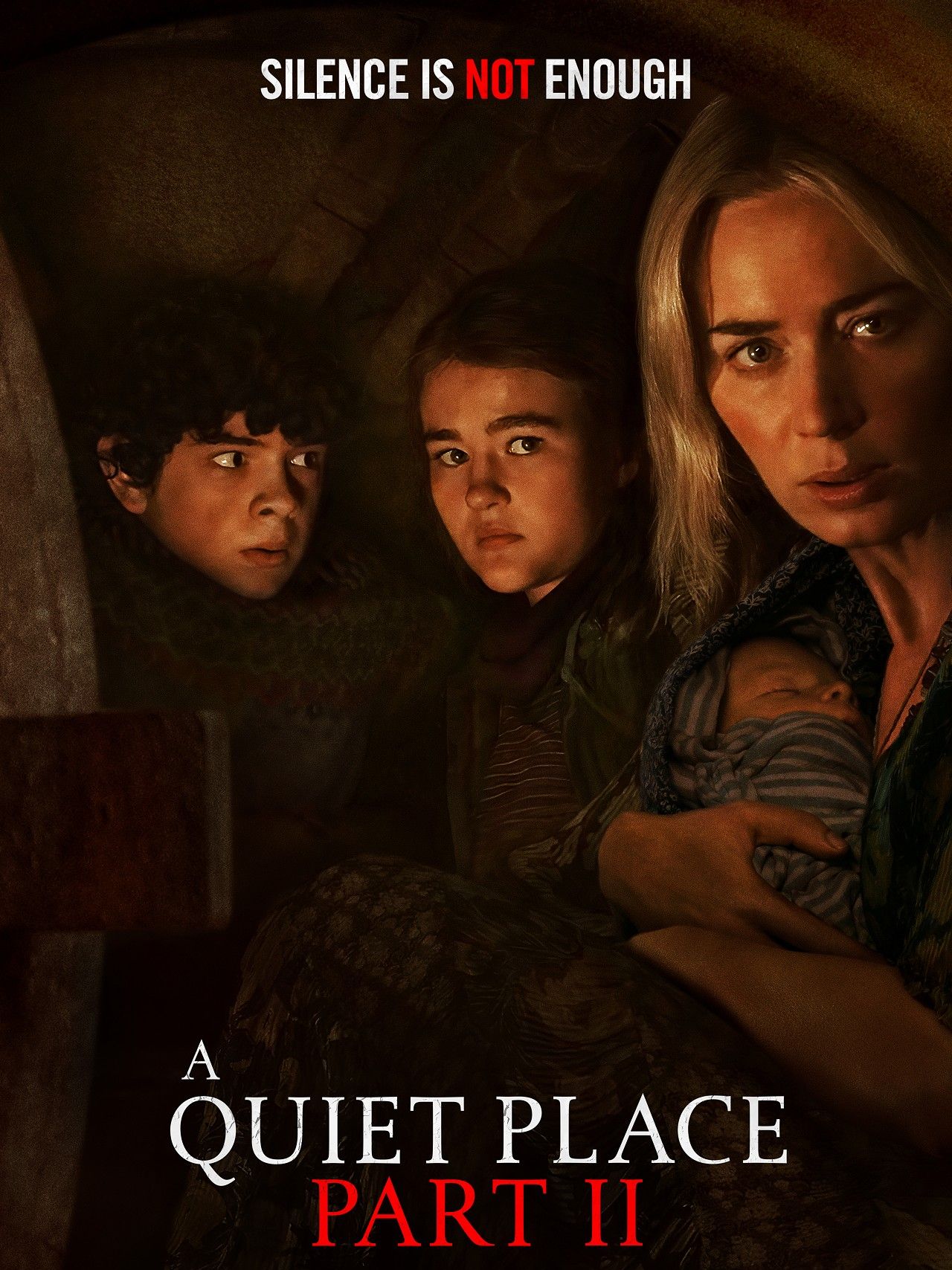
No one expected John Krasinski to pull off something like this when the first part of the film was released in 2018, especially for a film with so little conversations and human sounds. Because that is the plot of the film. Horrifying alienistic monsters with better hearing than most people, intent on annihilating humanity, and a family’s attempt to survive the torment.
At the end of the first film, Lee Abbott (John Krasinski) makes a heroic sacrifice for the sake of his family, and the sequel picks up with Evelyn Abbott (Emily Blunt), Lee’s wife and also John Krasinski’s wife IRL (Emily Blunt), trying to find more people to establish a safe haven in these trying times.
Along the journey, she meets a scruffy man named Emmett (Cillian Murphy), a family friend of the Abbotts, who is initially antagonistic but subsequently joins Evelyn and her children. While the previous film was about sacrifice and compromise, this sequel is about the strength that comes from banding together with others to confront a common enemy.
This movie isn’t afraid to go on a more dialogue-driven adventure, and it also doesn’t enforce all of the laws of producing noises as strictly as the first one did. There are a few excellent jumpscares, but nothing out of the norm, as Krasinski clearly prefers to play it safe for the most part.
He does, however, throw in the occasional radical twist by putting every single character, including the infant, in dangerously uncomfortable positions, but they always find a way out, as is the cliché.
The storytelling is flawless, and you’ll be glued to your seat for the entirety of the film. As the family’s matriarch, Evelyn is immediately put to the test. She was a badass in the first movie, and she is in this one as well. The other actors and actresses also play their due part magnificently. However the villains in this movie, the alien creatures that fall from the sky, don’t seem to have any development or any sort of backstory to them, which is the only drawback- if you consider it even- that is.
Overall, Quiet Place has done an excellent job of portraying the complexities of human interactions in such difficult settings, and here’s hoping that Part 3 does more to help give the aggressive human-eating beasts a “voice” of their own (Pun Intended). Until then, don’t miss out on this well-made thriller.
Godzilla vs Kong

On paper, this appears to be a titanic fight, and justifiably so. Godzilla vs Kong is a terrific action film that caters to the audience’s wants.
When the famous titan Godzilla escapes from an APEX facility in Pensacola, Florida, Madison (Millie Bobby Brown) gathers her gang of conspiracy theorist friends to investigate APEX’s nefarious plans, believing Godzilla to be a creature with a heart as big as itself and capable of emotional comprehension.
APEX assembles a team that journeys to the Hollow Earth, where Kong’s king formerly reigned, and things take a turn for the worst from there. Kongs and Godzillas species have been at war since the beginning of time, and this movie piggybacks on it to further introduce a villain which is the Mechagodzilla controlled by Ren Serizawa(Shun Oguri), a mix of mechanical and conscious prowess.
The narrative is rather basic, and the film does not appear to drag it out unduly, which is obvious in the film’s usage of gorgeous and breathtaking CGI moments, which also help to carry the weight of the film as a whole. It also succeeds in establishing the history and magnificence of the two titans; their sheer size and fearsome character are enough to leave us speechless.
The idea of the film allows for the growth of relationships between all of the characters. Like Ripley, Hicks, and Newt in “Aliens,” the childless Nathan Lind(Alexander Skarsgard), the surrogate parent Ilene Andrews (Rebecca Hall), and the orphaned Jia grow to trust and work together until they’ve formed a makeshift nuclear family.
It’s tough not to give tremendous credit to the cast, but Kaylee Hottle stands out among the rest in her part as Jia, who communicates with Kong through sign language. Everything else centres on battle, and the bulk of the time, viewers are subjected to powerful beings battling for dominance.
Even when the combat continues to get intense afterwards, it takes place in a world where the worst has already occurred. There isn’t a single thing remaining. This adds to the depth of the whole scene and plot, making it a thoroughly enjoyable time.
Although it may appear that King Kong or Godzilla are the baddies, the real villain is Walter Simmons (DemianBichir), a wealthy businessman who is hell-bent on eradicating every other ecosystem to save mankind. Is he, in fact, in the wrong? That’s an argument for another day, but one thing is certain: this film should absolutely be on your watchlist.
The Devil Below
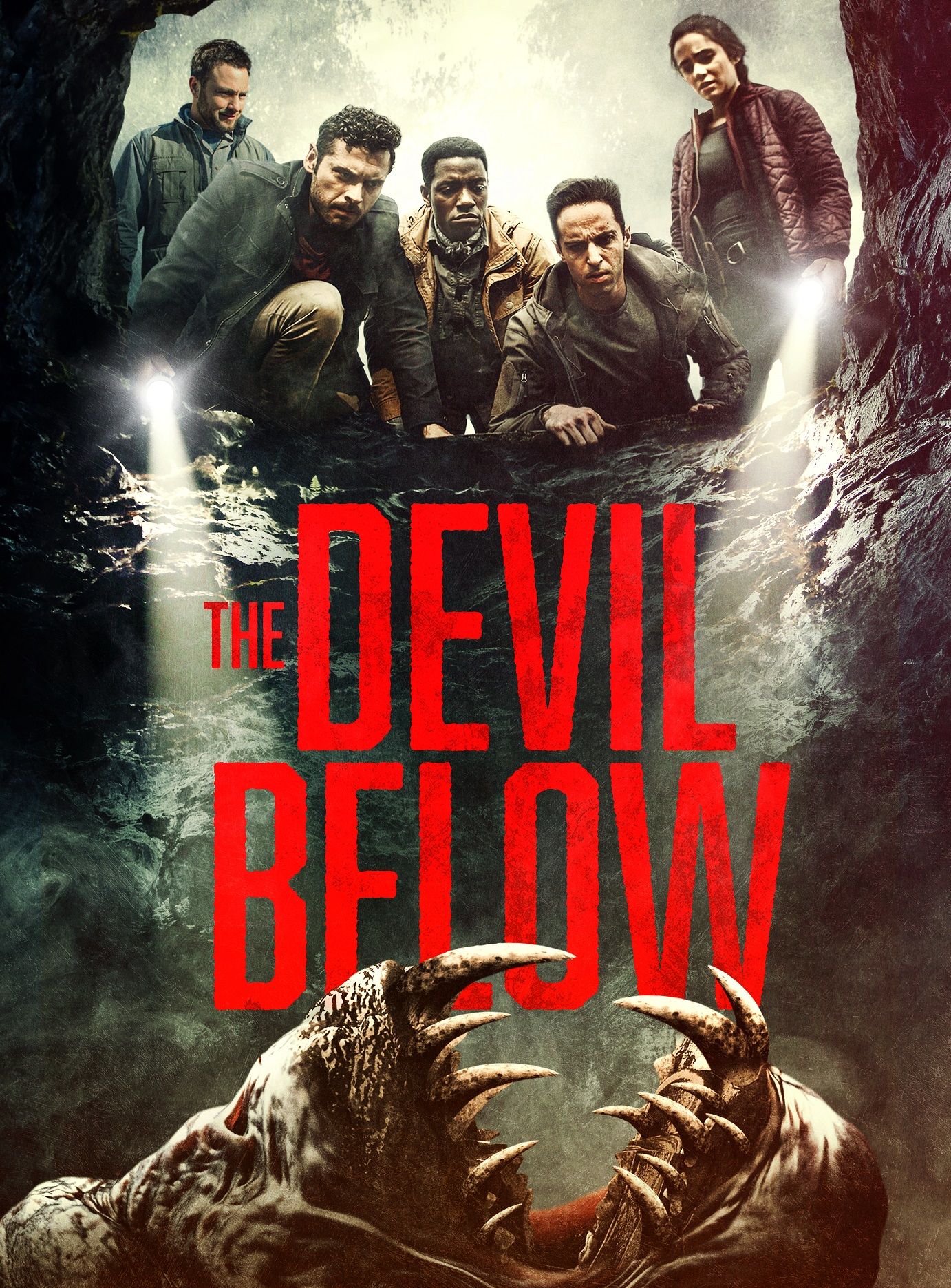
A group of scientists and adventurers examines an urban legend about an abandoned coal mine in Appalachia and uncovers a threat far worse than they expected. If this summary sounds cliched to you, don’t dismiss it before giving it a shot. Because The Devil Below is a thoroughly satisfying horror film that performs its job in the most appropriate way.
It all starts with a very basic topic that we’ve all seen before. The adventure group is made up of all of your regular character categories. Arianne (Alicia Sanz) is a fearless explorer hired to locate the mine, which was erased from maps after a series of fires discharged dangerous toxic gases.
A crew of scientists, commanded by brash British explorer Darren (Adan Canto), joins her. Given the mysterious nature of the mine’s legends, it’s no surprise that one of the gang members, Shawn (ChinazaUche), is a superstitious type, and the only one who feels that something dangerous may be lurking below.
However, given how distinct the characters are, there is a lot to say about them; an attempt is made to give them reason, which is accomplished through a wonderful line of conversation, and their backstories are handled perfectly without dragging on.
The chat that takes place at the beginning of the film is also highly important to the rest of the film. It’s an explanation scene, and it’s far superior to other cliché horror films’ half-hearted attempts at character development. The movie does a good job in fleshing out the characters and their dynamics and it is seen when we find ourselves mulling over the deaths of the same characters.
We’re anticipating a typical survival horror film in which we watch as the group is eliminated one by one. That is not the case, because the majority of the film does not attempt to follow a linear narrative; instead, it is cleverly interspersed with emotional moments and exhilarating atmospheric buildup, making us forget this is a horror film at all because it provides us with more than just jumpscares.
As a result, The Devil Below isn’t your typical horror film. While the creature’s presence isn’t entirely explained, it does allow for a dramatic shift in tone, which accelerates the pace significantly. The picture abandons its horror elements for a while once the creature is shown, favouring action, which adds a lot of hype and tension.
The actors are also giving it their all with the script given to them. In the same way that Alicia Vikander’s Lara Croft in Tomb Raider (2018) seeks to add both hardness and vulnerability to her overall stoic character, Sanz’s lead performance as Arianne is reminiscent of the same.So definitely when all is put together, the Devil Below is a great example in its attempt.
Tomorrow War

Chris Pratt’s star power and recognition from the “Jurassic World” and “Guardians of the Galaxy” franchises were used to create “The Tomorrow War,” an intriguing and entertaining Amazon Prime exclusive sci-fi thriller.
The world is shocked in The Tomorrow War when a group of time travellers arrives with an urgent message: mankind is fighting a lethal extraterrestrial species thirty years in the future. If soldiers and citizens from the present are to survive, they must be moved to the future and join the fight.
Dan Forester, a high school teacher and family man, is one of many who has been recruited (Chris Pratt). Dan links up with a bright scientist (Yvonne Strahovski) and his estranged father (J.K. Simmons) in a futile attempt to rewrite the fate of the world for his young daughter.
Director Chris McKay weaves together several familiar yet fascinating components in a very inspired approach, with a touch of time travel, a swarm of ruthless alien invaders, a ragged band banding together to defeat them, some unresolved father-son issues, and a few oddball sidekicks to provide comedic relief.
When they arrive, they’ll be faced with an army of albino creatures known as White Spikes, whether they’re ready or not. They scurry and shriek, strangle and cut with tentacles, and roar in a rhythmic manner similar to that heard in “Predator.” They also appear to be refreshingly new, both individually and collectively. Not only do they move in an unsettling manner, but the enormous action scenes are also edited in an intense way.
In the midst of all of this future mayhem, Pratt actively summons his theatrical abilities. He was already a highly charismatic character zipping around the Marvel Cinematic Universe as the brash Peter Quill, and he can be a thrilling action hero battling with dinosaurs as the heroic Owen Grady.
As the voice of cherry Emmet Brickowski in “The LEGO Movie,” he’s an irresistible charmer. In the same regard, Pratt is now also known for playing the role of a suburban dad trying to save his family and all of humanity side by side, to perfection.
In the final half-hour, the film succumbs to its “Alien” influences, with deafening shrieks and blood and yellow-green fluids squishing and pouring everywhere. In any case, no one knows what the future holds for us, but one thing is certain: everyone should see this film as soon as possible.
No one gets out alive
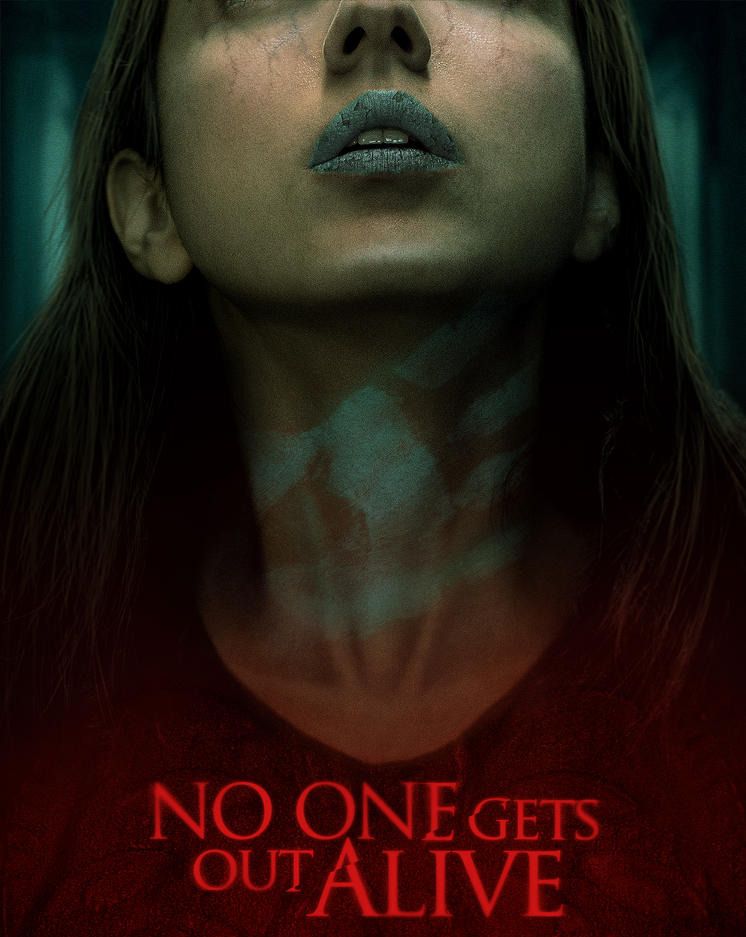
The best horror movies play on universal fears like swimming in deep water, washing in a sketchy motel, or receiving a strange phone call. The most horrifying movies, on the other hand, explore a deeper fear: the fear of the unknown.
No One Gets Out Alive was Netflix’s first Halloween release, a horror thriller about an undocumented immigrant named Ambar (Cristina Rodlo) who is trying to start a new life while balancing her lousy job and unscrupulous landlord. In theory, the film works. It has all of the elements of a great horror film.
A terrific young actress putting her life and soul into the lead role; writing and producing partners like Andy Serkis, and a focus on illegal immigration, a contentious issue in today’s politically polarized world, should have all added up to something exceptional.
With all this in the mix, director Santiago Menghini’s approach portraysa masterful drive to get the plot underway. The film wonderfully breaks beyond its status quo after two distinct prologues, one establishing Ambar’s background and the other showing the house she’s about to occupy.
Throughout a reoccurring hospital scene in the film, Ambar is plagued by the death of her ailing mother. Then there’s the difficulty of navigating a factory while other immigrants profit from her lack of experience.
This is all before we get to the nefarious owners of the lodging home, who prey on vulnerable immigrant women like Ambar. The brothers Red (Marc Menchaca), Becker (David Figlioli) and the house have a gruesome past, reminiscent of films like “The Living Idol” and “The Mummy.”
A creature with swole muscly arms-for-legs, a face hidden behind a mask, a thick amphibian-like body, skinnier arms with human-like hands, and a mouth full of teeth emerges from a gloomy box at the film’s pinnacle moment. This perplexing creature was an interesting and original innovation for many viewers and completely enhanced the feel of the movie from whatever it had built so far.
In situations like this, sluggish spooks can be excruciating, but that is not the case in No One Gets Out Alive. Ambar is terrified of the voices she hears in her room, but she’s also afraid of not being able to obtain falsified documents proving her citizenship. Overall, this is an enthralling film that must be watched to be fully appreciated.
Demonic
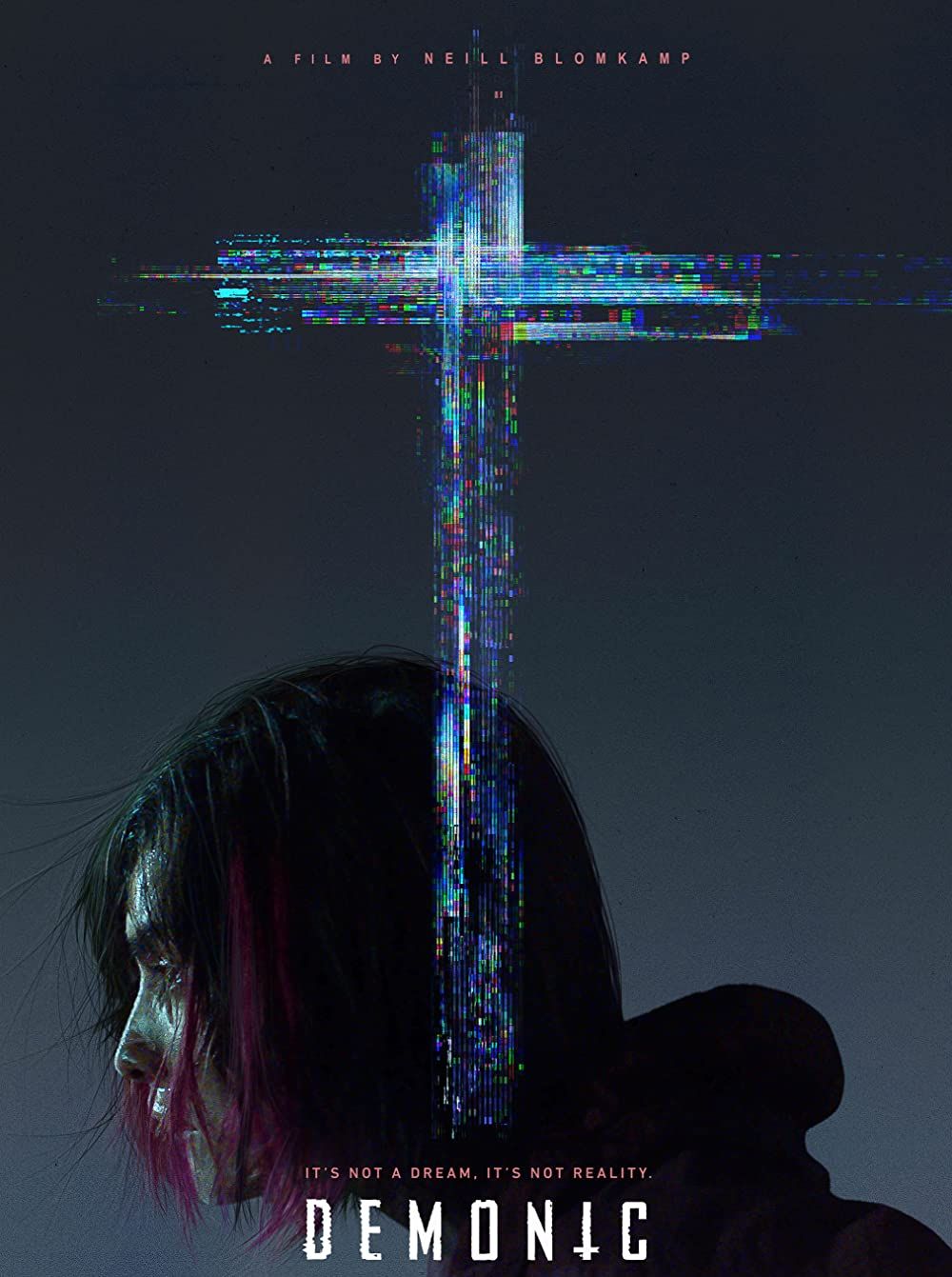
“Demonic” gives the feel of a film made by someone who wasn’t scared to step into this genre and give it their own flavour, working within their own constraints. Everything about this picture is excellent, from the direction to the writing to the acting.
After a scary dream involving her mother Angela (Nathalie Boltt) overshadows the film, Carly (Carly Pope) is contacted by an old acquaintance named Martin (Chris William Martin). Angela and Carly had been estranged for years, with the daughter fleeing her mother after a series of unforgivable violent and deadly crimes. According to Martin, Angela is supposed to be in a coma in a hospital.
Angela investigates and learns that two men (Michael J. Rogers and Terry Chen) are interested in Angela and Carly. They’ve devised a method for allowing anyone to access the dreamscapes of coma patients, and they want Carly to use it to “speak” to her mother.
It’s a bizarrely sketched motion-capture approach that dehumanises scenes while emphasising a frigid alienating feel that extends to live-action moments. “Demonic” is an unusually passive film for a filmmaker who has previously worked on projects that were more overtly aggressive, in part because Ms. Pope is portrayed in such a compelling way that it’s never clear what mood she’s supposed to be conveying, keeping the audience on their toes and making things unpredictable.
Demonic is a noteworthy supernatural thriller with praiseworthy dialogue and wonderful execution, featuring anything from people quickly seeking for information on the Internet to gathering clues from their hallucinations to a raven-like creature. Arguably, all of these parts compare to the major disclosure regarding the dreamscape scientists, which is given little attention or explanation following their genuine goals.
Demonic had gained all of its individuality and technological revolutionary appeal by the time Carly returns to the simulation with all of her information for one more encounter with her mother. It’s the film Neill Blomkamp has always wanted to make, and after only 30 minutes, he settles for a typical possessed plot with great cutaway jokes like dreams inside dreams to generate an eerie sensation of panic, so demonic deserves a spot on this list.
Candyman
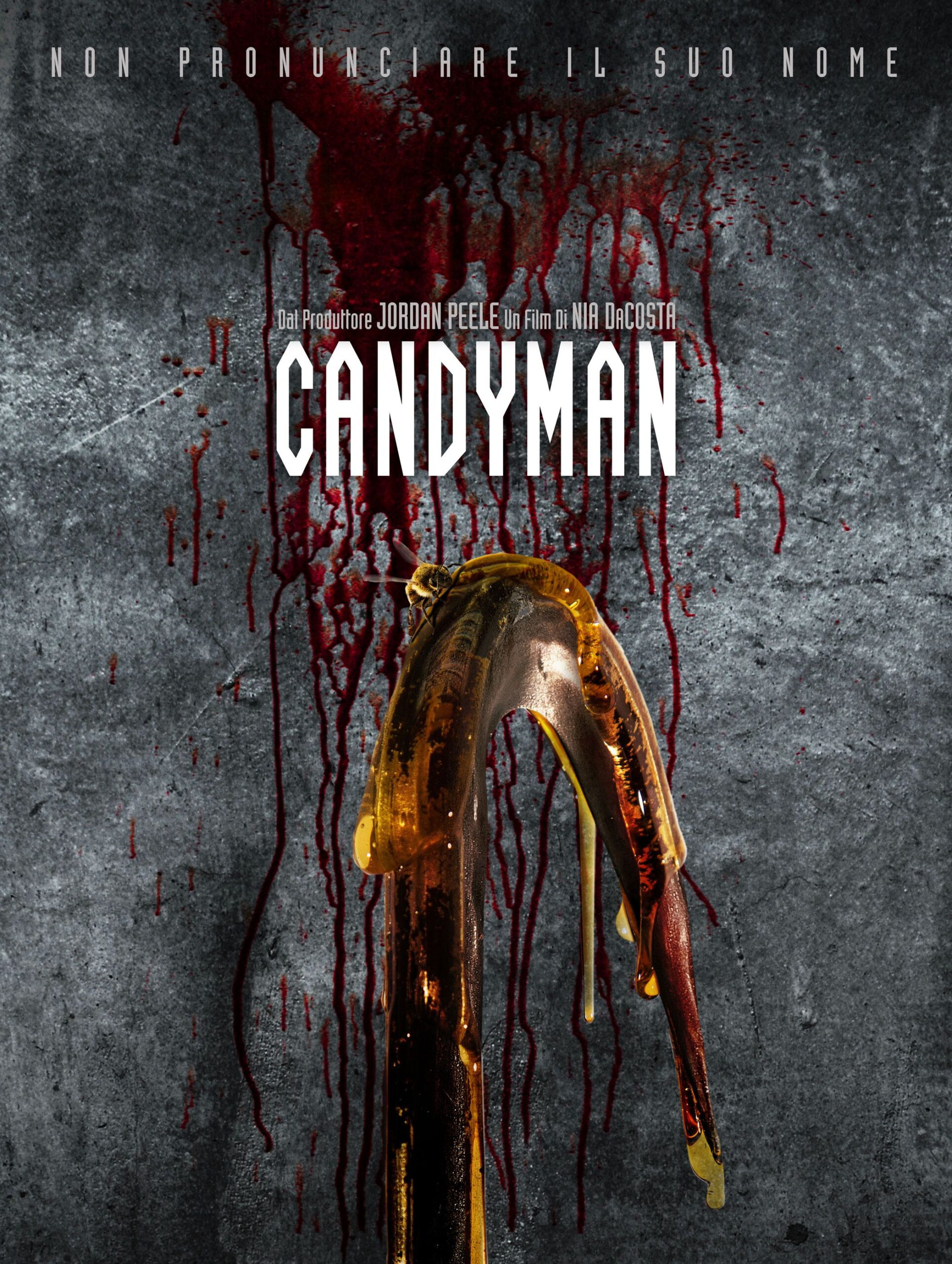
Candyman is set in Chicago, where Bernard Rose’s original 1992 version of Candyman began by analysing the relationship between folklore, urban legends, and anti-Black aggression. Those themes haven’t faded since the release of Rose’s film; in fact, they’ve only become stronger. In the current edition, they are intertwined with social commentary and even similar terror delights.
After the prologue, Nia DaCosta’s Candyman jumps to the present day, where famed visual artist Anthony McCoy (Yahya Abdul-Mateen II) and artistic director Brianna have no chemistry (Teyonah Parris). Recently, Anthony has been stuck in a creative rut. His previous series, which portrayed Black males with nooses draped around their necks and naked chests, has been ignored for a long time.
However, Brianna’s brother (Nathan Stewart-Jarrett) tells Anthony about the Candyman tale over a campfire, summarizing the events of the 1992 film.Though audiences who haven’t seen the 1992 picture will most likely need this recap, this sequel covers the events of the first film 3 times, leaving its 90-minute runtime properly distributed.
While paying respect to the predecessor, it stays faithful to its own vision and plot. Virginia Madsen and Vanessa Williams, both in their original roles, make brief cameos (but not onscreen), demonstrating how well the tale is stitched together. The rest of the ensemble is fantastic, with Abdul-Mateen standing out in a difficult role.
In a short length of time, the performers also persuade us of their relationships.The film also explores the obsessive sacrifices artists make for their craft, as well as bodily horror. After being stung by a bee, Anthony gets a rash on his hand, which causes his skin to itch and peel over time.
The degradation of his physique coincides with his surge of neurotic inventiveness. The actual makeup work is incredibly powerful and frightening.Nia DaCosta uses a mix of black comedy, deception, and smart framing to create the death scenes, fully admitting that what you don’t really see can be a lot worse than what you see. One well-staged murder scenario is shown in a wide angle while the camera pulls back, giving us a view of someone fleeing just as the slaughter is taking place.
All in all, we’re in for a wonderful, stimulating evening at the movies.
Chaos Walking
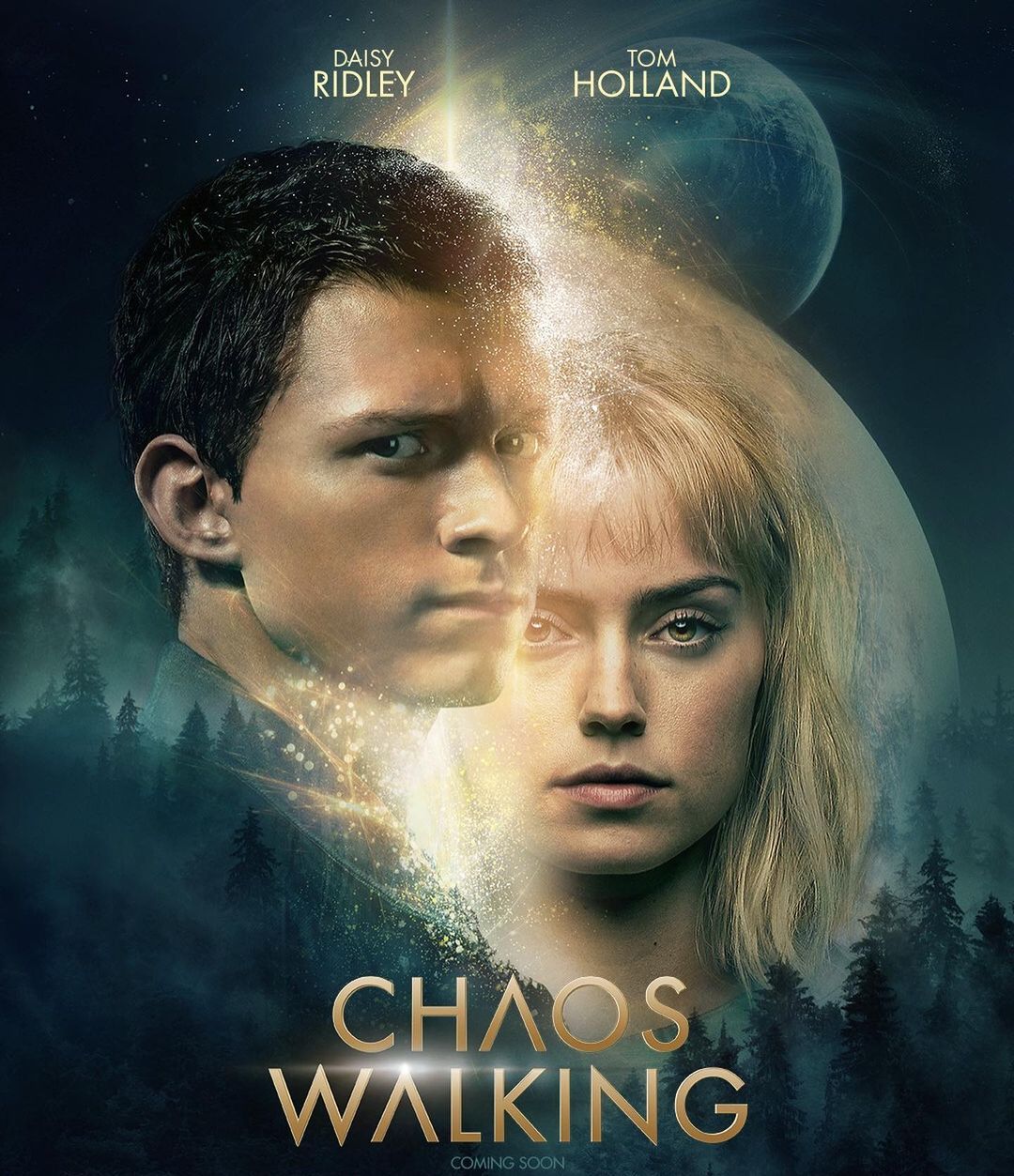
The year is 2557. On the lonely planet of New World, a society of male-only space pioneers is afflicted by ‘the Noise,’ a weird swirling cloud that displays each man’s deepest sentiments. After Viola (Daisy Ridley) crashes-lands on the planet, Todd (Tom Holland) must defend her from deadly powers beyond his control.
We eventually find ourselves in the world of a science fiction film such as “E.T.” or “Starman,” with a telepathically linked duo, one of whom is more advanced than the other. The sci-fi elements coexist with a survivalist film element, as well as elements of a typical Hollywood Western depicting a conquered land’s politics.
Todd’s essentially sexless, pre-adolescent way of interacting with women, and Ridley’s super-capable, big-sisterly vibes (also her energy in the “Star Wars” movies) guarantee that any attraction between them is repressed or diverted.
The narrative of the indigenous species of humanoids that were driven into captivity by humans and purportedly cursed the remaining humans with audible/visible thoughts, as if damning them for their actions, is interesting in “Chaos Walking.” In the rush to get Viola and Todd to fulfil their objective, a number of details are missed.
There’s also a not-so-subtle statement about how men and women are historically conceived in different civilizations. Males, for better or worse, are very simple to read, whereas women hide secrets and have ancient knowledge that can heal the men. We don’t get much more than a few fragments of any of this, to be honest.
The film is under two hours long and attempts to cover as much territory as a season of a television program while pacing itself like a trailer. When it takes a breather—as in a scene in which one character reads aloud to another—you get the essence of the lighter, more concentrated, and more gratifying film it is.
Ridley and Holland provide excellent, unadorned performances as individuals we care about, in a setting that’s been built just enough to keep you focused on the intriguing unsolved riddles that the film will never go deeper into. One of the most important aspects of this film is the male dominance cult that has been built up and nourished.
However, once you’re hooked, it’s a life-changing event that you’ll remember long after the movie’s initial allure has faded. It makes you wonder how anyone can live in this world for even an hour without going nuts.
Antlers
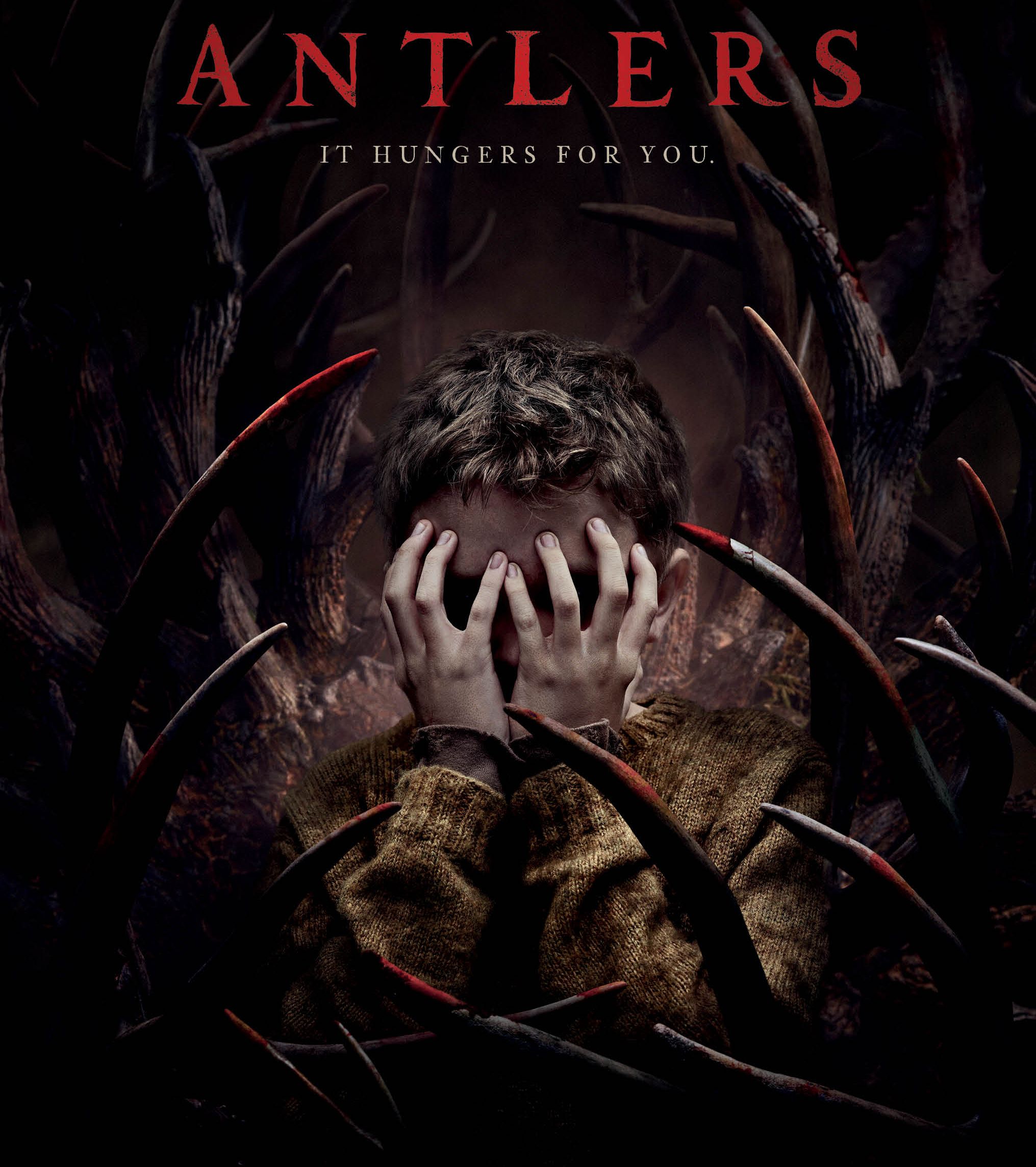
“Antlers” is a film about melancholy. Humanity’s darkest hour. It’s a magical darkness. In the literal sense, filmmaking darkness. It’s a dirty, ugly, violent film that always works well together, and it’s obvious that it’s the result of its creators’ passions, particularly director Scott Cooper’s.
It concentrates on persons on the margins of society who are dealing with serious emotional difficulties. It imagines a world in which genuine sorrow could lead to unfathomable disaster.
Trauma, sadness, abuse, and addiction aren’t new themes in the genre, and those quick to dismiss the “elevated horror” trend will find much to criticise here, but they’ll be ignoring the film’s extraordinary craftsmanship, committed ensemble, and considerable ambition as well. “Antlers” definitely lives up to its expectation, and it has potential to gain a following over time.
The story is set in a small township in Oregon, one of those once-blue-collar communities that has been devastated by economic downturns and drug addiction. The reluctant sheriff of this distant corner of the planet is Paul Meadows (Jesse Plemons). Julia (Keri Russell), Paul’s sister, has returned to a village that has tormented her since she was a youngster and now appears to be the most miserable place on the earth.
If “Antlers” has a shortcoming, it’s in how willing the writer is to focus on the issues rather than the characters. Aside from that, this is a masterfully done picture that grips you in ways you didn’t expect.
Brilliant actors like Amy Madigan and Graham Greene portray supporting roles that feel particularly developed. Russell and Plemons put in a lot of effort to make their parts feel more multifaceted. It’s also a film that, due to its extremely serious tone, can become very thought provoking.
Those hoping for a classic monster movie based on the dramatic trailers that have been airing since before the outbreak may be disappointed by what amounts to a character drama. At the same time, Cooper’s personal commitment to the subject and its invariably stunning outcomes necessitates a number of daring, often terrifying filmmaking decisions, which he, predictably, embraces.
“Antlers” is a lovely, thorough, and yet duly somber entry in a horror sub-genre that is explored far too rarely these days; Guillermo del Toro was certainly correct in casting Cooper, and the movie uses del Toro’s own energy correctly to fully bring it to life.
Blood Red Sky
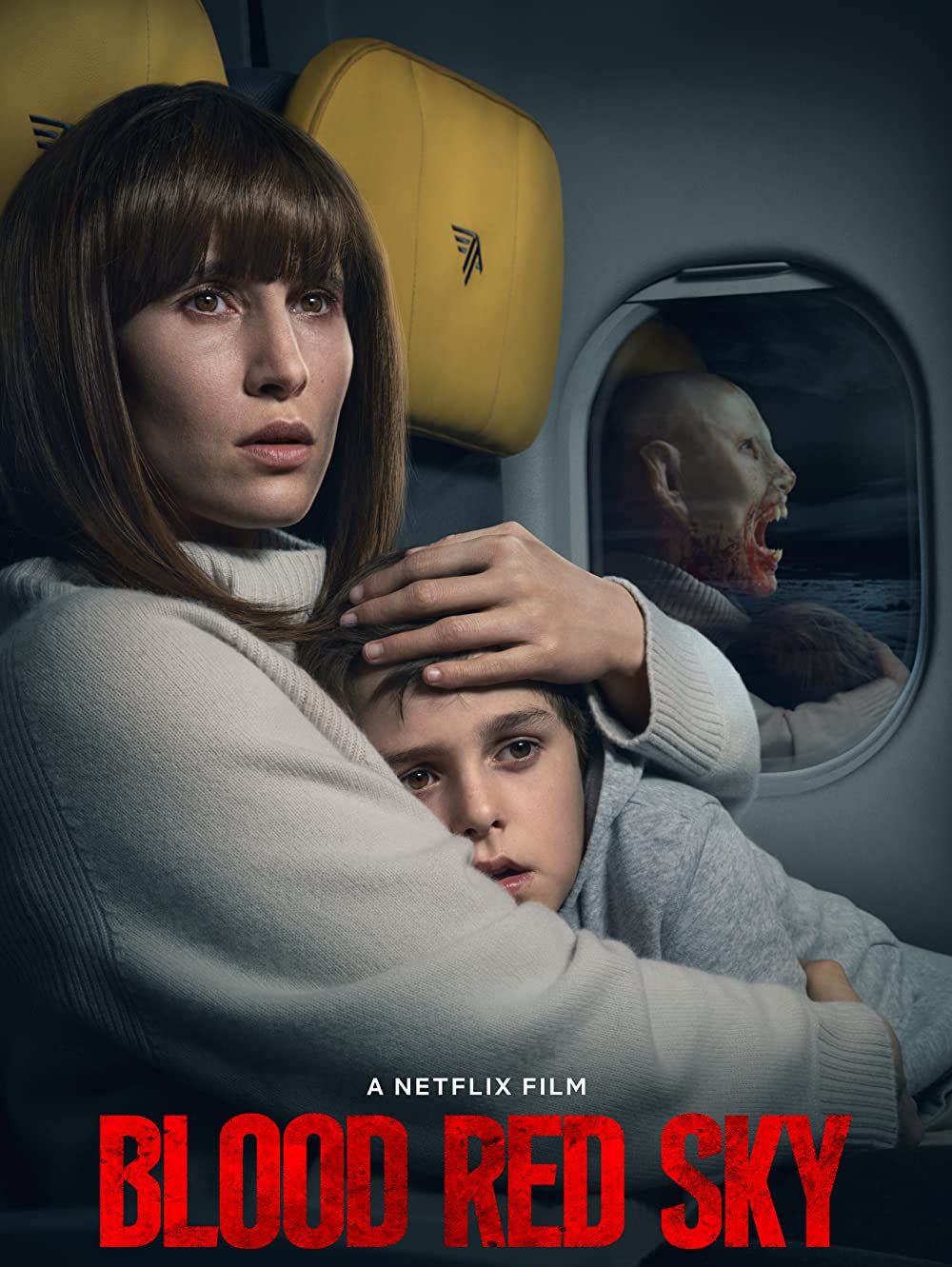
The primarily German-language Netflix film is a mix of hostage drama, family bonding drama, and horror film. The lady in the subtitles referred to as “Mom” acts as a forewarning. She appears to be ill and unsettled. When terrorists seize the plane carrying them from Germany to the United States, she never lets her smart son Elias out of her view and clings to him for dear life.
There’s a secret weapon on board that tests not only the hijackers, but our own cognitive biases and notions of evil and ugly as well. Without giving anything away – the film must be seen to be believed – suffice it to say that director Peter Thorwarth crafts a nail-biting gorefest that splatters blood in virtually every nook and cranny of the jet by the end.
This amazing subject is handled in a startlingly ordinary manner in “Blood Red Sky.” When Nadja becomes a complete vampire, “Blood Red Sky” comes to life in horrific spurts. Even if it appears less rational at *some* points, it never loses its spark or sense of tension. It’s easy to feel invested in all the story, in part because the POV is primarily that of Elias, who is astonished by the craziness going on around him and is most concerned for his mother’s destiny.
One of the most remarkable aspects is that the film’s directing is precisely balanced, which sets the stage for the thrills to begin. The plane fight sequences all blend together in terms of aesthetics and substance, making the experience more intense and thrilling while maintaining the suspense.
Horvath’s framing of Nadja and Elias’ relationship, even if it receives too much focus, is excellent and entirely deserving of all the attention it receives. This is truly a story of a woman trying to protect her son, and the extent to which parents would go not just to keep their children safe, but also to keep their hideous side disguised from their children. It’s an absolute pleasure to see that such a great subject was dealt with in a very relatable manner on a cinematic journey that was absolutely worth taking.
